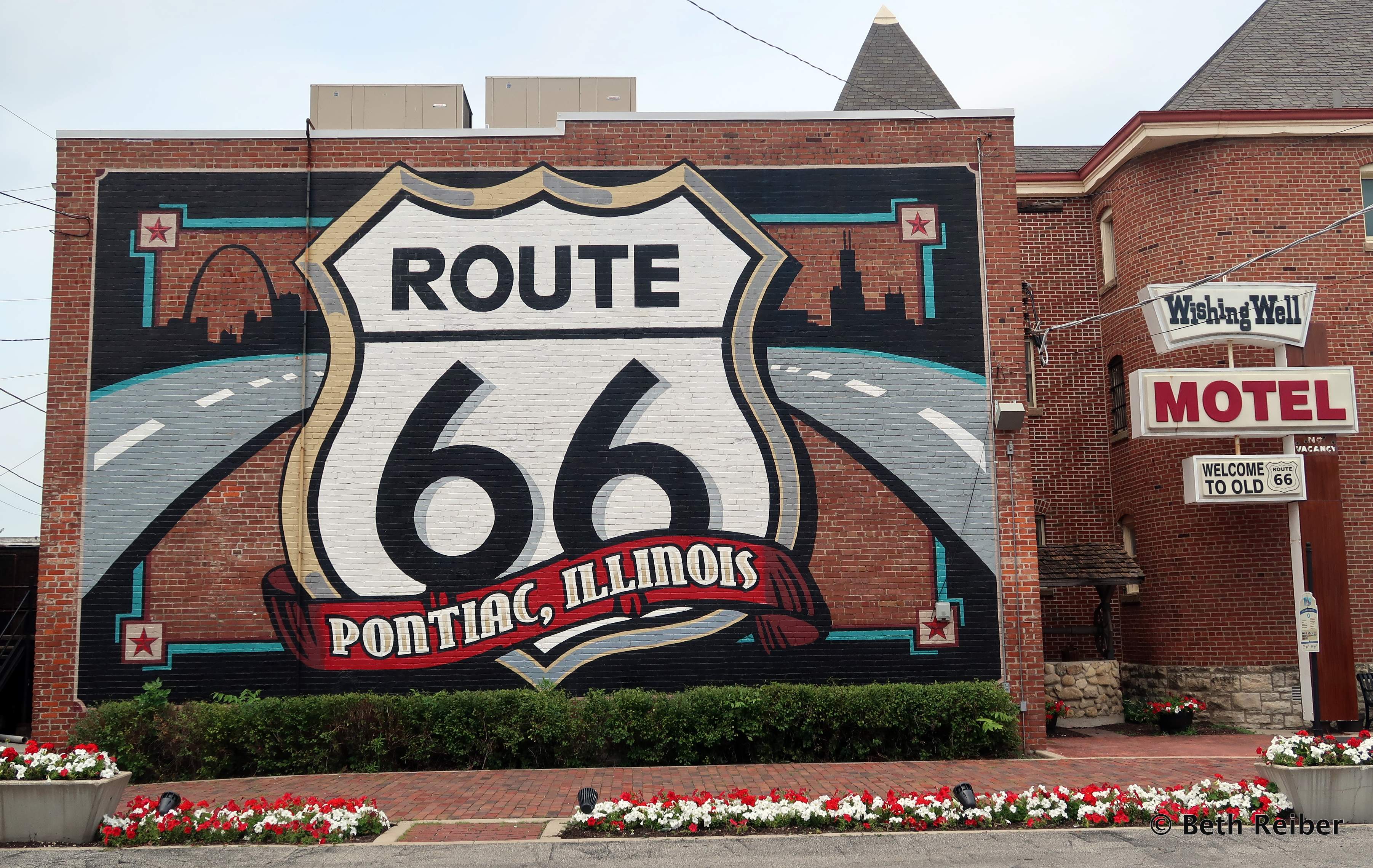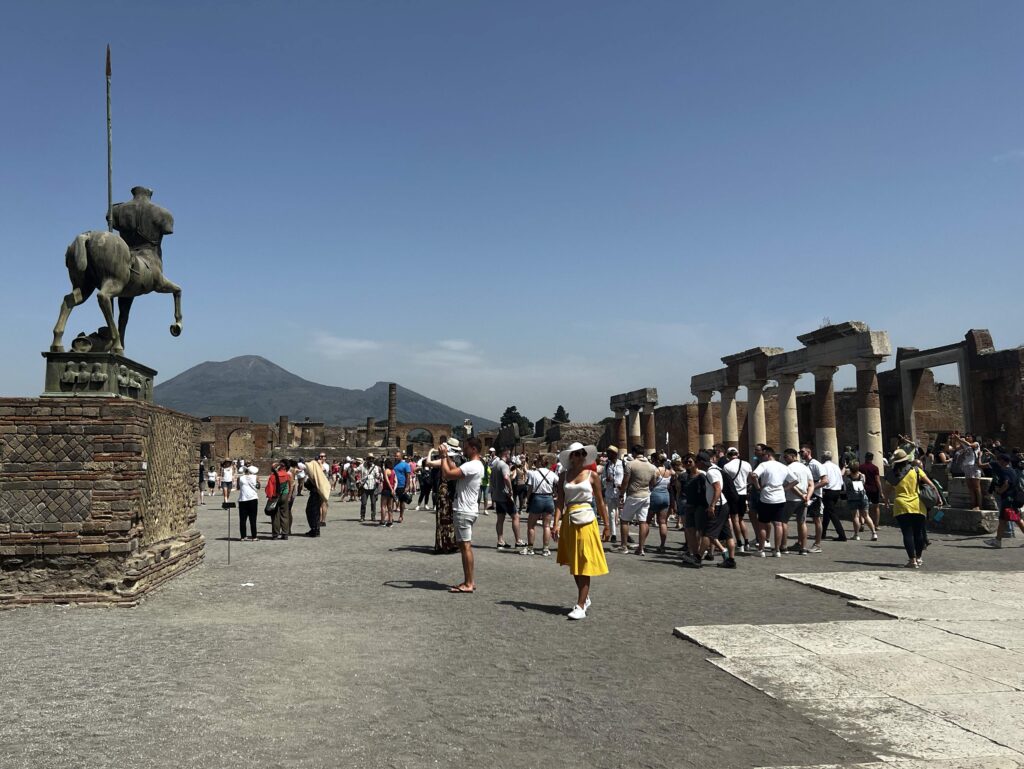The golden years of the Roman Empire span only some 500 years, from 27 BCE to 476 CE, but its lasting legacy captures our imagination like few other superpowers. Its reach was so vast, from most of western Europe through northern Africa, that a fifth of the world’s population lived within its range. Certainly, much of what we know about ancient Rome is because of Pompeii, buried by an eruption of Mount Vesuvius and preserved like a time capsule some 2,000 years old. But Pompeii wasn’t the only town that died in 79 CE. In fact, because Pompeii is so well known and draws huge crowds, you might consider visiting Herculaneum instead of Pompeii.

What Pompeii and Herculaneum have in common
Both Pompeii and Herculaneum were built on a grid and were home to markets, taverns, bathhouses, public latrines, and homes ranging from magnificent villas with gardens to humble quarters for slaves. There were open-fronted shops selling housewares, blacksmiths’ stalls, tanneries, granaries, amphitheaters, brothels, and bakeries. Sophisticated plumbing, sewage disposal, and aqueducts assured a high standard of hygiene, while Roman law brought strict codes of conduct and order.

Both have villas filled with frescoes and mosaics. A standout in Pompeii includes the Villa of the Mysteries with its stunning continuous fresco that runs along three walls. It’s mysterious because no one knows exactly what it depicts. A wedding, perhaps, or an initiation into a mystery cult? For me, the mystery is the lashing a young girl who is clinging to the lap of another woman, the meaning of which is lost to the mists of time.
In Herculaneum, one of the most important discoveries is the Villa of Papyri, once owned by Lucius Calpurnius Piso Caesoninus, senator, philosopher, and father-in-law of Julius Caesar. It’s considered one of the most opulent villas ever constructed, with outstanding frescoes, Greek sculptures, and other artwork. But it’s most famous for 1,800 scrolls, representing perhaps the largest surviving library from the Greco-Roman world.

Both villages, therefore, provide a window into ancient Roman life and are registered together as a UNESCO World Heritage Site. Their size, purpose, and even how they met their demise, however, tell different stories.


If time is limited, visit Herculaneum instead of Pompeii
Pompeii was a trading and commercial town, with a population of about 13,000 from all walks of life, providing a complete picture of an ancient Roman town.
Herculaneum, on the other hand, was a seaside resort for Rome’s rich and famous, who built magnificent villas with gardens to escape the stifling heat of Rome. So while Pompeii served as an important commercial center, Herculaneum was a place for pleasure and relaxation.
Because Pompeii is much larger than Herculaneum, you’ll need a full day to explore its 110 excavated acres. Herculaneum, on the other hand, has excavated only a fourth of its original 50 acres, meaning you can see it in just a couple of hours and still come away with knowledge of ancient Roman times.
If you hate crowds, visit Herculaneum instead of Pompeii
Because we all learned about Pompeii in elementary school and the horror of the people who died there, the ancient site is one of the most visited places in Italy. Pompeii receives about 4 million visitors a year, leading authorities in 2024 to limit admission to 20,000 a day. Not that it’s always that crowded (summer, peak travel times, and Sundays are the busiest), but you get the picture. Not only do tickets contain the buyer’s name, but they’re also for timed entries on peak days.

Herculaneum, on the other hand, is off the radar of most visitors and receives about 400,000 a year, meaning that you can wander at leisure without battling crowds and still see everything.
How are Pompeii and Herculaneum different
Because Pompeii and Herculaneum met their ends in different ways, their states of preservation are very different. When Mount Vesuvius erupted in 79 CE, it first shot a column of volcanic ash, gas, and rock high into the air, which then fell on Pompeii, toppling the upper levels of buildings and crushing people with debris or asphyxiating them. Ash and pumice instantly encased everything and everyone. As bodies decayed, cavities formed where they once were, which were filled with plaster in the 19th century. These plaster casts are what you see when you visit Pompeii.

Herculaneum, on the other hand, wasn’t hit right away, allowing most people to escape. But then came a pyroclastic surge so intense that volcanic gases and rock rushed down the volcano at 50 miles an hour at a temperature of more than 750 degrees. People were vaporized and died instantly, and all organic material was instantly carbonized. When it was over, Herculaneum was gone, entombed under 80 feet of volcanic material that quickly cooled into solid rock, preventing any penetration of oxygen.

So while Pompeii was susceptible to the elements, Herculaneum boasts a level of preservation you can’t see anywhere else. Food, wood, plants, and other organic items almost 2,000 years old make Herculaneum an archaeologist’s dream and an outstanding example of a Roman town. Wooden beds, chests, staircases, textiles, wine racks, and even the hull of a 29-foot boat are some of the treasures Herculaneum has to offer. And although it was long thought most inhabitants had escaped, skeletons were discovered in the 1980s beside the ancient seacoast in arched, brick boathouses, perhaps awaiting marine rescues that never came.

There other differences between both towns. Pompeii has a huge (and crowded) forum, amphitheater, and brothel, things an excavated Herculaneum doesn’t have. Herculaneum, on the other hand, has more upper floors that paint a complete picture of Roman streets, wooden items used in daily life, and skeletons rather than plaster casts.

Be sure to see the National Archaeological Museum of Naples
If you’ve always wanted to visit Pompeii and can’t stand the thought of missing it, I get it. I visited Pompeii back when I was a university student, but I still couldn’t resist going a second time a few days after seeing Herculaneum. Just don’t visit both on the same day, or else everything will be a blur.
But rather than visiting both, I believe your time would be better served by visiting Herculaneum together with the National Archaeological Museum of Naples. Filled with statues, frescoes, mosaics, everyday objects used in daily life, jewelry, and other treasures recovered from Pompeii and Herculaneum, it’s the best way to imagine the opulence and greatness of the Roman Empire. After all, whether you visit Pompeii or Herculaneum, most of what you’ll see are street scenes lined mostly with empty buildings. The museum brings the ancient Romans to life.

For more information on Herculaneum and what to see, refer to my article Herculaneum Then and Now, published in East-West News Service. If your travels are confined to Rome, see my blog Ostia, Ancient Rome’s Port City.





